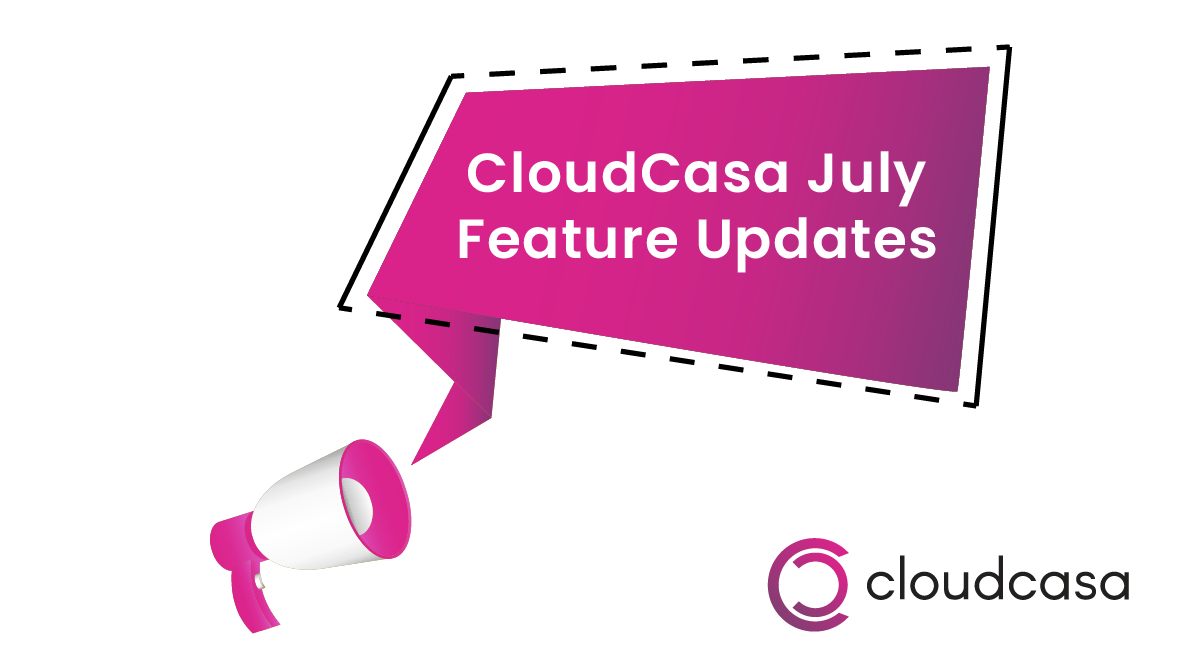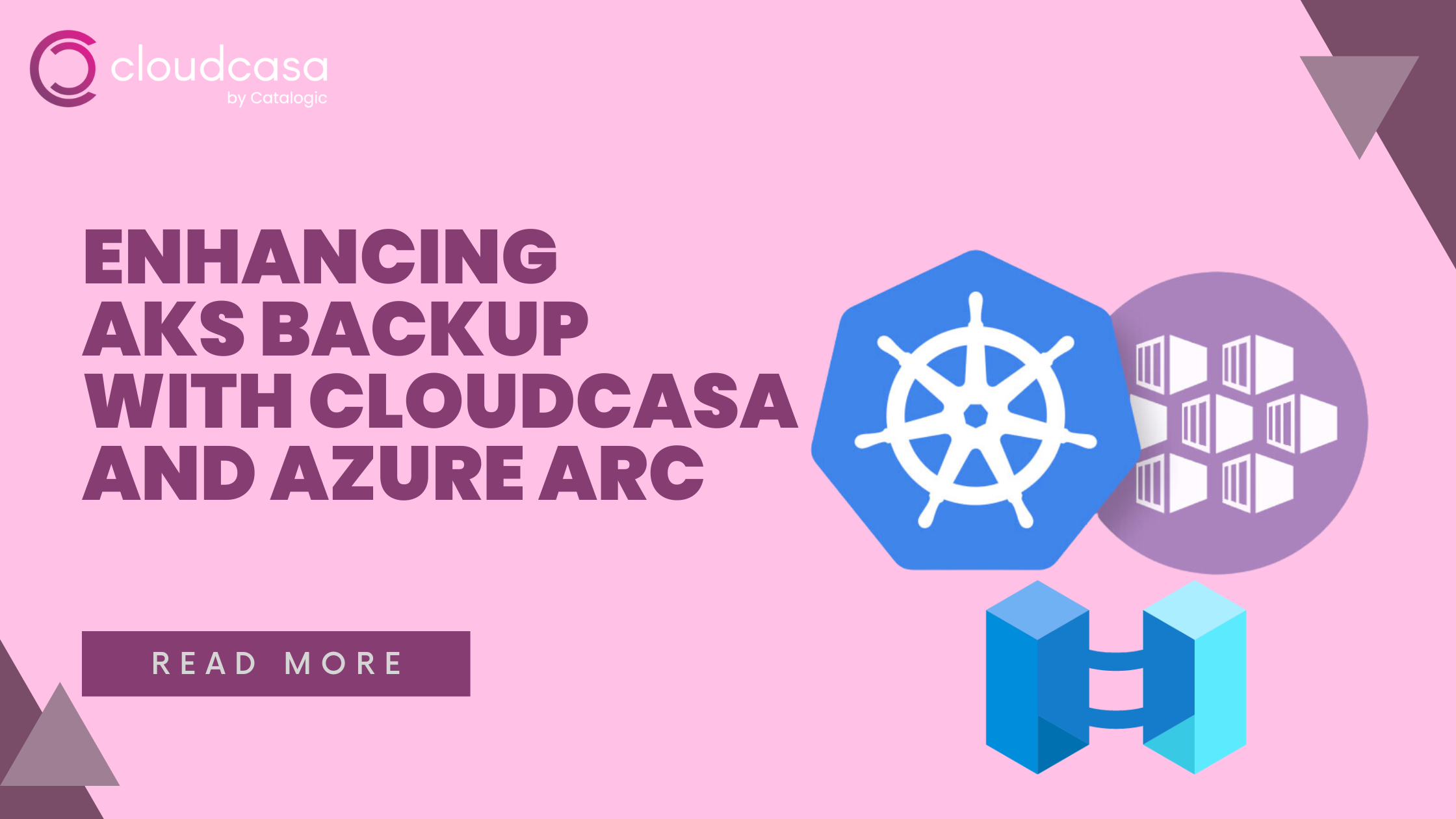It’s been about three months since the last CloudCasa feature release in April, and we now in the Dog Days of summer. These, as you may know, are named for the heliacal rising of Sirius, the Dog Star, in this sultry season, though the term more often conjures images of dogs lazing in the hot summer sun. We have been doing no summer lazing here at CloudCasa, though! Since our April release, we have focused much of our development effort on performance and reliability improvements. These changes typically don’t make it to the release notes because they aren’t visible to users, but that doesn’t mean they are any less significant! With the focus on performance and reliability in this development cycle, we have a significant number of interesting new features to announce.
Support for RBAC at the Cluster Namespace Level
With this release we have added general support for namespace-level access control. Previously we supported namespace-level access control in certain cases, such as when using our integration with Clastix Capsule. Now we support it fully in all situations. This can be very useful if you wish to provide self-service backup and restore capabilities to clients of shared clusters in your organization.
To grant namespace-level access to a user, edit the cluster, then click on the Permissions button. Now user permissions can be added for whole clusters (the default) or for individual namespaces.
New Alerts Page
We have added a new Alerts page to make it easier to manage large numbers of alerts. To reach it, click on the Alerts tab in the dashboard and then on the See More link. On the new page, you can sort and filter alerts by date, type, and description, and select/delete them using the checkboxes on the left.
This new alert view will improve performance and reliability for enterprise cluster administrators who routinely have to deal with many alerts. This page will also serve as the home base for new alert-related features that are coming in the future!
User-Definable Shortcuts Added to UI
We have added a new Shortcuts pane to the Dashboard. It appears by default above the Activity and Alerts tabs, complete with some default shortcuts. You can remove or re-order shortcuts by clicking on the edit icon. Click the trash icon to delete shortcut or drag shortcuts up and down in the list to reorder them. To add a new shortcut, navigate to the page you would like to link to and click the star icon located next to the page title or in the upper right corner (you can also toggle it off by clicking on it again).
If you don’t wish to see the shortcuts pane, simply remove all of the configured shortcuts and it will disappear entirely. Adding a new shortcut will cause it to re-appear.
Agent Support for ARM64 Architecture (Beta)
We are happy to announce availability of the public beta of ARM64 architecture support for the CloudCasa agent. This includes support for AWS Graviton instances, and Azure and GCP instances based on Ampere Altra.
You should now be able to install the agent as usual on clusters using ARM processor-based nodes. No special installation procedure is required. Note that currently the ARM64 version of the agent only supports the CloudCasa for Velero service. Full support for CloudCasa Pro service will be available soon. Please contact us if you have any questions regarding ARM support, or if you encounter any problems with it.
Add “pods” to Selected Resource Types Automatically if “persistentvolumeclaims” is Selected
When restoring resources by type, pods must be selected in order for restores of persistentvolumeclaims to succeed. Now pods will be automatically added to the list of resource types to be restored when persistentvolumeclaims is selected, and a message will be displayed indicating why.
Average Node Count for Current Period Shown in Billing & Payments Page
Usage information for the current billing period, showing usage and average worker node count, is now displayed on the Configuration/Billing and Payments page.
Storage Class Mapping Available for Snapshots Mounted for Copy Backups (released earlier)
A new backup option called Enable storage class mapping for PV snapshots mounted during backup has been added under Advanced Options in the backup wizard. This option allows you to use different storage classes when PV snapshots are mounted to copy their data off during Snapshot and Copy backup operations.
This may be useful, for example, to indicate to your storage system that less replicas or a different type of storage should be used for these transient volumes than for normal production volumes. By default, the storage class of the original source volume will be used.
Transactable Azure Marketplace Listing and CNAB Bundle for Agent (released earlier)
We are happy to announce that Azure AKS users can now purchase CloudCasa directly through the Microsoft Azure marketplace. See our Azure Marketplace listing for more details. Previously, CloudCasa was listed in the Azure marketplace, but could not be paid for through the marketplace. Note that this purchase method is intended to be used by Azure-only customers. If you have a multi-cloud or hybrid cloud environment and you wish to purchase CloudCasa through the Azure marketplace, you should contact CloudCasa sales.
Purchases of CloudCasa service through the Azure Marketplace will contribute towards your organization’s Azure consumption commitment if your organization has a Microsoft Azure consumption commitment (MACC) or Azure commit to consume (CtC) agreement with Microsoft.
Option to Report an Issue Added to Job Status Overview Page
A Report an issue link has been added to the overview tab in the job activity details view, which can be reached by clicking on a job name in the dashboard’s Activity tab. Clicking on it will send a message to the CloudCasa support team containing information about the job to assist in troubleshooting.
New Restore Page
A new summary page for restore definitions has been created to improve performance and reliability. Clicking on a restore name in the Protection/Restores page will now take you to the summary page instead of opening the restore definition itself.
Flow Change to Cluster Creation Wizard
The wizard used for adding clusters has been changed so that the first question asked is “Do you want to manage an existing Velero instance?”. CloudCasa Pro users should answer no to this question. Users who have an existing Velero installation on their cluster that they wish to manage using CloudCasa for Velero should answer yes.
More Information About Namespace Selections Shown in Backup and Restore Wizard Summary Pages
Now when specific namespaces are included or excluded in a backup or restore, the information about the included or excluded namespaces will be shown in the wizard’s summary page. Mousing over the Namespaces field in the summary will display a list of all included or excluded namespaces.
New time Format in UI
A new format for displaying time intervals such as run times has been introduced in the UI. Time intervals will now be displayed in a format like “1h 2m 0s” instead of “01:02:00”.
Change to User Instructions for Cluster Removal
We have made a change to the instructions displayed in the UI for removing the CloudCasa agent from a cluster. We have eliminated the CRD removal step. There were some cases where the CRD removal command was causing issues. This will cause some snapshot and Velero CRDs to be left behind after removal, but this has minimal downside.
Option to Exclude Unattached PVCs from Backups
An Exclude unattached PVCs option has been added under Advanced Options in the backup wizard. It defaults to off, which means that unattached PVCs will be backed up. This is the same behavior as in the past. Be aware that there is currently no option to restore unattached PVCs. This capability will be added in a future version of CloudCasa.
Kubernetes Agent Updates
In this update we have again made several changes to our Kubernetes agent to add features, improve performance and reliability, and fix bugs. However, manual updates shouldn’t normally be necessary anymore because of the automatic agent update feature. If you have automatic updates disabled for any of your agents, you should update them manually as soon as possible.
Notes
With some browsers you may need to restart, hit Control-F5, and/or clear the cache to make sure you have the latest version of the CloudCasa web app when first logging in after the update. As always, we want to hear your feedback on new features to improve performance and reliability! You can contact us using the support chat feature in the CloudCasa UI or by emailing support@cloudcasa.io.


